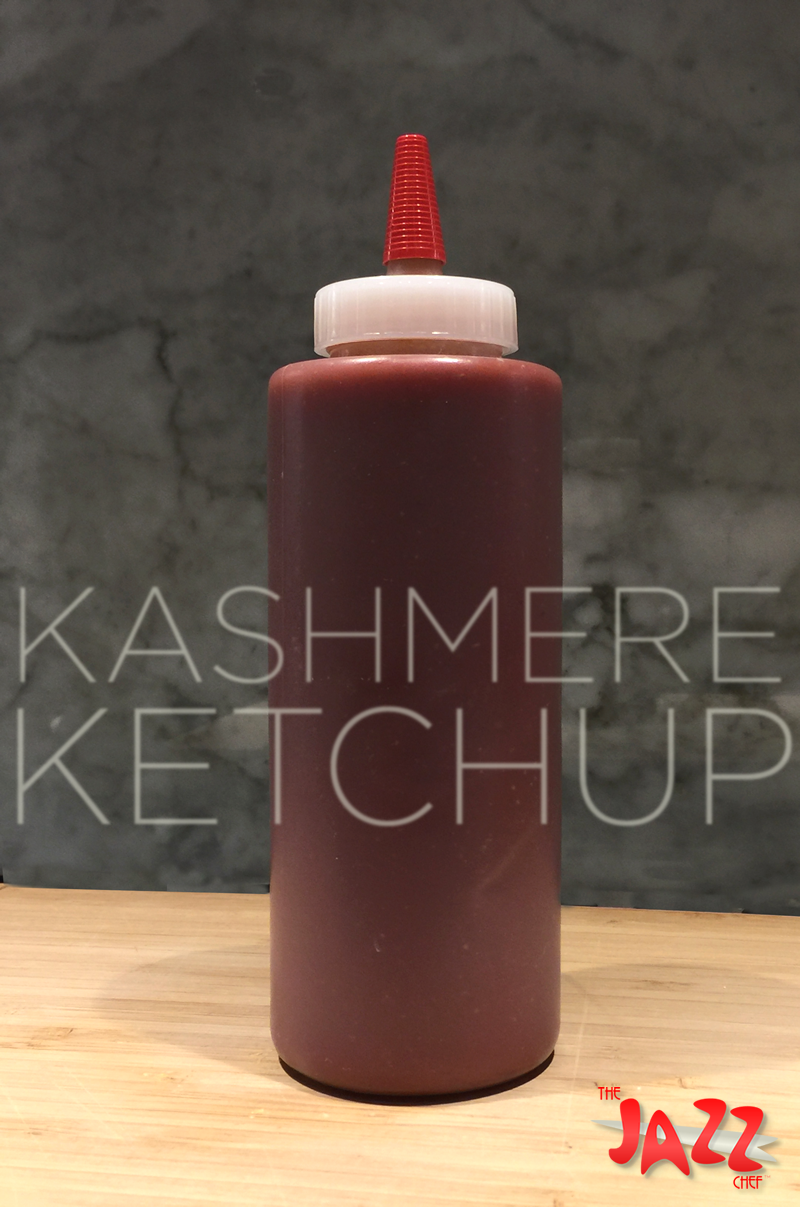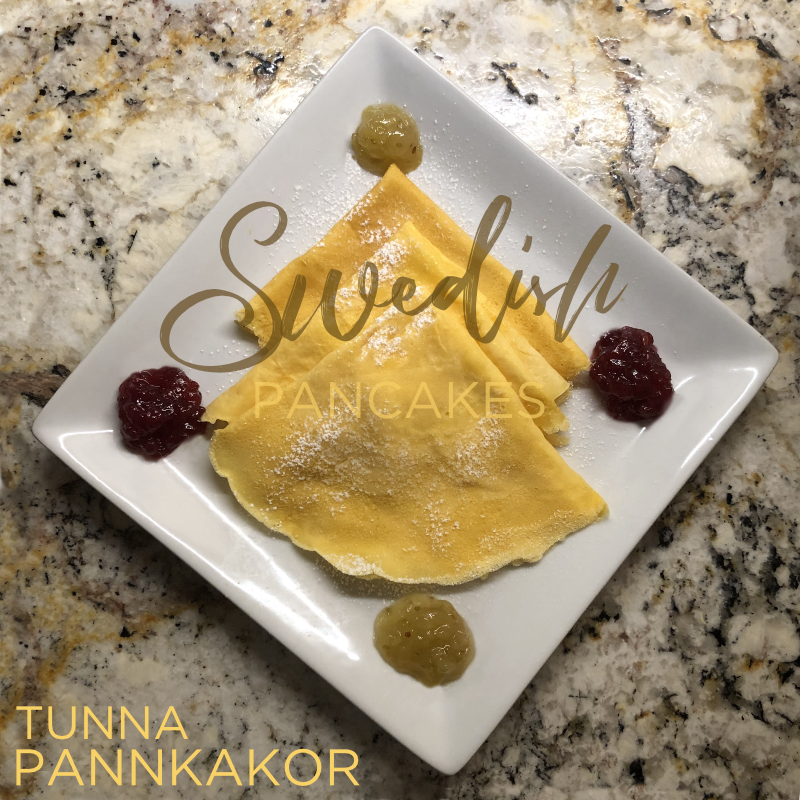Authenticity Ground Zero is making one of the most commonly used condiments in the United States, and found around the globe in one form or another: Ketchup.
 Kashmere Ketchup is my smooth, soulful, tangy way of honoring The Kashmere Stage Band, heart of the Texas Thunder Soul Sound, one of one of the greatest bands, bizarrely a high school band, that was a huge foundation of the professional soul scene in Los Angeles and New York from the late 1960s well into the 1980s.
Kashmere Ketchup is my smooth, soulful, tangy way of honoring The Kashmere Stage Band, heart of the Texas Thunder Soul Sound, one of one of the greatest bands, bizarrely a high school band, that was a huge foundation of the professional soul scene in Los Angeles and New York from the late 1960s well into the 1980s.
57 Reasons Why You Need to Make Your Own KeTchup
Why make your own when you can get cheap conventional, or even some good boutique red off the shelf?
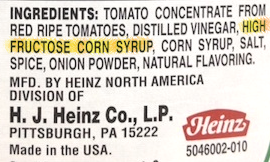 Avoid the ketchup “HIgH”
Avoid the ketchup “HIgH”
Let’s start with conventional red: Many, like standard Heinz, are made with a cheap and fat-like addictive sweetener called High Fructose Corn Syrup. It’s a leading source of obesity in both American children and adults. It’s like feeding your family alcohol without the buzz, but with the fat that it puts on your body. Right after HFCS in sodas, it’s a major “bad” in your home. They save a few pennies, you gain a few pounds. Bad trade.
Sure, Hunts is HFCS-free, Heinz now sells an HFCS-free “Natural,” and there are a number of good “craft” Ketchups like Sir Kensington’s or First Field, but they sell for premiums to do what you can do at home for about 1/8th of the price.
KETCHUP’s LONG STRANGE TRIP
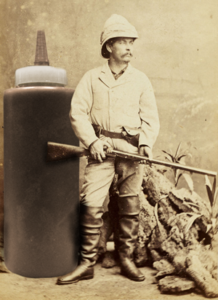 Plus, there is the adventure of it all. There are almost an infinite number of riffs on ketchup, just from its long history, so it’s time to have some fun with something we all take for granted!
Plus, there is the adventure of it all. There are almost an infinite number of riffs on ketchup, just from its long history, so it’s time to have some fun with something we all take for granted!
You’d think that Ketchup is as American as Apple pie, but, Uncle Sam-ophiles, it’s yet another import from China.
Pick your pronunciation of Hokkien Chinese, but Ke-tchup, kê-tsiap and kôechiap refer to a pickled fish sauce from Fujian province traded far and wide across Southeast Asia and Indonesia.
Popular in part because it kept for months without spoiling, Dutch and English sailors brought it to Europe in the 1600s, and, not too long after that, it ended up in the Americas.
Ketchup has been made of everything: Fermented oysters, plums, mushrooms, nuts, fermented leaves, and, of course, tomatoes. Even though the condiment hit the ground with some of the earliest settlers, it took nearly a century to add North American tomatoes to it because, for some time, Europeans, new to tomatoes imported from South America, believed that tomatoes were poisonous like nightshade.
1812 wasn’t just a great year to write the national anthem. James Mease published the first recipe that put tomato pulp into ketchup and created a food more American than any other.
KETCHUP 101

Before you go all retro and start making it with oysters and mushrooms, let’s see if we can master Ketchup as we know it from the big sauce slingers on the store shelves.
I’ve been through a ton of recipes. Some take a few minutes. Others take days to cure. All seem to miss the point if you’re going for something that friends and family are accustomed to and like.
You can dodge off with Sriracha or habañero or mango and smoke, but until you can produce something like bottle basic, your family will treat your red differently to indifferently. Master “101Kash” and they’ll go on the adventure, bottle after bottle, with you.
My Kashmere Ketchup is elegant, soulful, and pretty simple.
All American-style basic ketchup has these ingredients:
- A high quality tomato sauce without basil (alters flavor). We recommend Pomì
- Organic tomato paste – Thickens and sweetens with less sugar
- Organic sugar (or White)
- Vinegar
- Salt
- Onion powder
Imitating Brand:
The brand ketchup model has some additional basics:
- Worcestershire
- Cinnamon
- Clove
Knowing that, here we go:
Recipe
- 1 500g (17.64 oz) container POMI Tomato Sauce
- 1 170g (6oz) can Muir Glen Organic Tomato Paste
- 14.3g (1 tbsp) onion powder
- 14.3g (1 tbsp) worcestershire sauce
- 10g (2 tsp) Saigon cinnamon
- 7.5g (1.5 tsp) ground cloves
- 43g (1/3 Cup) Dextrose or Kirkland Fine Grain Organic Sugar
- 86g 1 Cup Muscovado Sugar (2/3 Cup) Brown sugar
- 1 tbsp apple or white balsamic vinegar
- Salt to taste
- 2 tbsp white vinegar
- 3-4 Plastic squeeze bottles
How-Tos
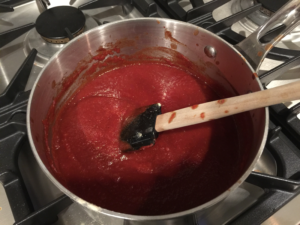 Combine all ingredients except the white vinegar into a medium pot over a med-low heat.
Combine all ingredients except the white vinegar into a medium pot over a med-low heat.
(All ingredients are cooked. We’re just blending and integrating the spice);- Bring to a low boil. Reduce heat and simmer for 20-30 minutes, or until thickened.
- Place ketchup into a non-reactive bowl (plastic or glass) and cover and cool completely in the refrigerator, at least 1 hour.
- Remove from the refrigerator and add white vinegar, one tbsp at a time, stirring and tasting to see if it is tart enough.
- Transfer to squeeze bottles. Keep refrigerated, and use whenever you need ketchup!
RIFFS
We’ll explore more extreme and historic ketchup variations in other upcoming recipes, but, off of the Kashmere recipe, you can experiment by:
- Curry powder (A fave of Germans over bratwürst as “Currywürst);
- Puree fresh mango and add with powdered habañero or jalapeño powder;
- A pinch or two of hickory salt for a smoky flave;
- 1-2 tsp Peruvian black mint paste;
- 1 tsp berbere spice;
- 1 tbsp Hung Foy Foods Sriracha;
- Any good hot sauce;
- 1 tbsp toasted orange peel.

